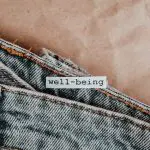Have you ever wondered if super glue can fix fabric tears? You're in luck! Super glue can be a lifesaver when it comes to repairing fabric tears, and with the right technique, you can achieve strong and nearly invisible results.
In this guide, we'll cover how super glue works on fabric tears, the types of fabric suitable for super glue repair, and the step-by-step process for using super glue to mend tears in your favorite fabrics.
We'll also share some tips for ensuring a durable and seamless repair, as well as important safety precautions to keep in mind.
So, if you're ready to master the art of fabric repair with super glue, let's get started!
Key Takeaways
- Super glue bonds fabric fibers together to repair tears.
- Super glue works best on natural fabrics like cotton and wool, as well as synthetic fabrics like nylon and polyester.
- Super glue creates a strong bond but may affect the flexibility of the fabric.
- Silk, wool, and nylon may not adhere well to super glue and may require alternative repair methods.
How Super Glue Works on Fabric Tears
Repairing fabric tears with super glue involves applying the adhesive directly onto the torn edges, allowing it to bond the fabric fibers together. When using super glue on fabric, it's crucial to consider the fabric compatibility and adhesion of the glue. Certain types of fabric may not bond well with super glue, so it's essential to test a small, inconspicuous area first.
Super glue generally works best on natural fabrics like cotton and wool, as well as synthetic fabrics such as nylon and polyester. The adhesion of the super glue to the fabric is vital for a durable and flexible repair. Once applied, the super glue forms a strong bond with the fabric, providing durability to the mended area.
It's important to note that while super glue creates a strong bond, it may not retain the original flexibility of the fabric. This can be a consideration for tears in areas that require significant flexibility, such as elbows or knees in clothing.
Understanding fabric compatibility, adhesion, durability, and flexibility is essential for effectively using super glue to repair fabric tears.
Types of Fabric Suitable for Super Glue Repair
When considering using super glue to repair fabric tears, it's important to know which types of fabric are suitable for this method.
Certain fabrics may not adhere well to super glue, while others may be too delicate for this type of repair.
Understanding the fabric types suitable for super glue repair will help you achieve the best results and ensure a successful mend.
Fabric Types for Glue
Select suitable fabric types for super glue repairs based on their compatibility and durability. When choosing fabric for super glue repairs, consider the following:
- Fabric Compatibility
- Cotton, denim, and polyester are good candidates due to their ability to bond well with super glue.
- Silk, wool, and nylon may not adhere as effectively and could require alternative repair methods.
- Adhesive Strength
- Heavy-duty fabrics like canvas and denim can withstand the adhesive strength of super glue.
- Delicate fabrics such as chiffon or lace may not hold up well to the bonding forces of super glue and could result in damage.
Considering fabric compatibility and adhesive strength is crucial for successful super glue repairs. Additionally, think about the environmental impact and explore alternative methods for fabric repairs when necessary.
Super Glue Adhesion
Cotton, denim, and polyester are the fabric types that bond well with super glue for effective repairs. When it comes to fabric bonding, these materials offer a good surface for the adhesive to adhere to, ensuring a strong and durable fix.
Super glue's adhesive strength is particularly effective on these fabrics, allowing for a reliable and long-lasting repair. The tight weave of cotton and polyester, as well as the sturdy nature of denim, provide an ideal foundation for the adhesive to create a solid bond.
Whether it's a tear in your favorite cotton shirt, denim jeans, or polyester blend fabric, super glue can offer a quick and reliable solution. Understanding which fabrics are suitable for super glue repair can help you tackle fabric tears with confidence and precision.
Repairing Delicate Fabrics
To repair delicate fabrics, such as silk or lace, with super glue, it's important to consider the fabric's texture and weave for optimal adhesion and long-lasting results. When repairing silk or other delicate materials with super glue, keep the following in mind:
- Fabric Texture:
Smooth, tightly woven fabrics like silk or satin are more suitable for super glue repairs.
Avoid using super glue on loosely woven or knitted fabrics, as it may not bond effectively.
By paying attention to the texture and weave of delicate fabrics, you can ensure that super glue repairs are effective and long-lasting.
When it comes to fabric tear prevention and clothing restoration, understanding the suitability of super glue for different fabric types is essential for successful repairs.
Preparing the Fabric for Super Glue Application
Before applying super glue to your fabric tear, it's crucial to clean the surface thoroughly to ensure a strong bond.
Make sure the fabric is completely dry and smooth before proceeding with the application.
This step will help the super glue adhere effectively and provide a lasting repair.
Cleaning the Fabric Surface
To prepare the fabric for super glue application, thoroughly clean the torn area using a mild detergent and warm water. This step is crucial for ensuring a strong bond and preventing further damage. Here's what you need to consider:
- Gentle Cleaning Techniques: Use a soft-bristled brush or a clean cloth to gently scrub the torn area. Avoid aggressive scrubbing, as it may worsen the tear or spread the damage.
- Fabric Tear Prevention: Proper cleaning not only prepares the fabric for super glue application but also helps in preventing future tears. Regularly inspect and clean your fabric items to avoid buildup of dirt and debris, which can weaken the fabric over time.
Ensuring Dry and Smooth
After cleaning the torn area, ensure that the fabric is thoroughly dry and smooth before applying super glue. This will help create a strong bond and prevent any further damage. To ensure proper adhesion and fabric tear prevention, follow these steps:
| Ensuring Dryness | Ensuring Smoothness |
|---|---|
| 1. Use a clean, dry cloth to gently dab and absorb any moisture from the fabric. | 1. If the torn area has loose threads, carefully trim them with scissors to create a smooth edge. |
| 2. Allow the fabric to air dry completely before proceeding with the super glue application. | 2. Smooth out any wrinkles or creases in the fabric to create a flat surface for the adhesive. |
| 3. Avoid using heat sources, such as hairdryers, as they can damage certain fabric types. | 3. Ensure the surrounding fabric is also smooth to prevent any uneven tension after the repair. |
Taking these precautions will help ensure that the super glue adheres effectively, creating a durable and seamless repair.
Step-by-Step Guide to Using Super Glue for Fabric Tears
When fixing fabric tears with super glue, start by carefully examining the tear to assess its size and location. Once you've identified the tear, follow these steps to effectively repair it:
- Clean the Area: Gently remove any dirt or debris from the torn fabric to ensure a smooth bonding surface. Use a soft brush or cloth to clean the area without causing further damage.
- Apply the Super Glue: Carefully apply a small amount of super glue along the edges of the tear, ensuring even distribution. Use a toothpick or a small applicator for precise application and to avoid excess glue.
As you proceed with the repair, remember to keep the fabric taut and allow the glue to dry completely before handling the repaired area.
Tips for Achieving Strong and Invisible Repairs
For achieving strong and invisible repairs, focus on applying the super glue with precision and ensuring thorough drying for optimal results. When mending fabric tears, precision is key. Apply a small amount of super glue along the tear, ensuring that the adhesive penetrates the fibers without spreading too wide. This helps create a strong bond without leaving a visible residue. Additionally, allow the glue to dry completely before handling the fabric to ensure a secure and seamless repair. Thorough drying is crucial for achieving an invisible mend.
To further strengthen your fabric repair, consider reinforcing the tear with a small patch of fabric on the underside. This technique not only provides additional support but also helps to conceal the tear and reinforce the area. When using alternative methods such as iron-on patches or fabric tape, ensure that the adhesive is suitable for the type of fabric you're repairing to prevent further damage.
Safety Precautions When Using Super Glue on Fabric
When using super glue on fabric, it's important to ensure proper ventilation to avoid inhaling the fumes and to protect your skin from accidental contact with the adhesive. Here are some safety precautions and proper application techniques to keep in mind:
- Protective Gear
- Wear gloves to prevent the glue from coming into contact with your skin.
- Use a mask or work in a well-ventilated area to avoid inhaling the fumes.
- Surface Preparation
- Lay the fabric on a flat, stable surface to prevent accidental spills or mishaps.
- Keep the work area clean and organized to minimize the risk of spills and accidents.
Remember that super glue can bond skin instantly, so it's crucial to take necessary precautions. By following these safety measures and proper application techniques, you can effectively use super glue on fabric while minimizing any potential risks.
Aftercare and Maintenance for Super Glue Repaired Fabric
To maintain fabric repaired with super glue, regularly inspect the area for any signs of wear or damage. This will allow you to catch any potential issues early on and prevent further tearing or damage.
Additionally, be mindful of how you wash and dry the fabric. When washing, use a gentle cycle and avoid high heat when drying, as excessive heat can weaken the bond created by the super glue.
Furthermore, consider using fabric sealants or protectants to reinforce the repaired area and prevent future tears.
When storing the item, be cautious of sharp objects or rough surfaces that could potentially cause new tears. It's also important to be aware of fabric tear prevention techniques, such as reinforcing weak spots and using proper sewing techniques.
While super glue can be effective for fabric repairs, it's also beneficial to explore alternative fabric repair methods, such as sewing or using fabric patches, especially for larger tears or delicate fabrics.
Frequently Asked Questions
Can Super Glue Be Used to Repair Delicate or Sheer Fabrics?
Yes, super glue can be used to repair delicate or sheer fabrics. It provides a strong bond and is a great alternative to sewing for small tears. However, it's important to test the adhesive on a small, inconspicuous area first.
Is It Possible to Remove Super Glue From Fabric if the Repair Doesn't Turn Out as Expected?
If the fabric tear fix with super glue doesn't work out, don't fret. You can remove super glue from fabric using acetone or nail polish remover. Alternatively, try fabric glue or iron-on patches for delicate fabrics.
Can Super Glue Be Used to Repair Waterproof or Water-Resistant Fabrics?
When it comes to fabric care and adhesive options for repairing waterproof or water-resistant fabrics, super glue can be a quick fix. However, consider durability and repair techniques to ensure a lasting solution.
Are There Any Special Considerations or Precautions to Take When Using Super Glue on Stretchy or Elastic Fabrics?
When using super glue on elastic fabric, consider fabric compatibility and adhesive strength. Ensure the glue won't stiffen the fabric and that the bond maintains durability despite stretching. Always test on a small, inconspicuous area first.
Will Super Glue Repairs Hold up to Regular Washing and Drying?
Regular washing and drying can affect the longevity of fabric repairs made with super glue. While super glue is durable, it may not hold up to frequent washing. Consider hand washing or using a delicate cycle.
- How Does Ring Spun Cotton Affect Garment Fit and Shape Retention? - August 13, 2024
- What Are the Challenges in Producing Ring Spun Cotton? - August 13, 2024
- Is Ring Spun Cotton Suitable for Plus-Size Clothing? - August 13, 2024







